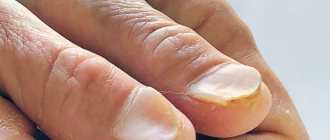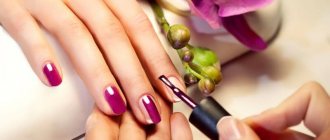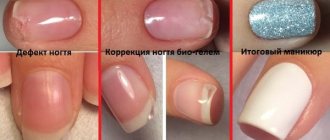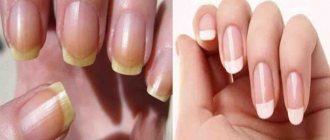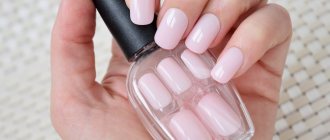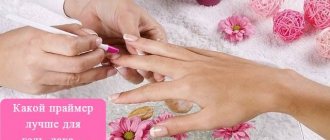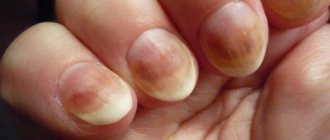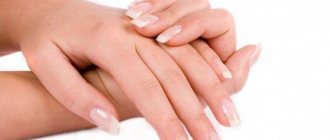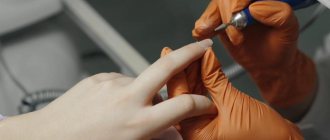Hands are a calling card for any girl.
An ideal manicure will speak of its owner as a neat and well-groomed person. Many girls are concerned about the slow growth of nails , which makes it impossible to get a beautiful manicure.
However, in this case, nail care products at home , which significantly accelerate their growth.
Aesthetic beauty of long nails
Neat long nails are, first of all, aesthetically beautiful. Short nails are more relevant for the stronger half of humanity, while girls should stand out with long nails.
Beautiful long nails are relevant and necessary for girls in such professions, for example, as a consultant in a jewelry salon, models and fashion models, and beauty salon technicians.
When working in such areas, beautiful long nails with a perfect manicure are essential.
Nail growth rate
| On average, the rate of nail growth for all people is approximately the same. On average, nails lengthen by 3 millimeters . It takes 3 to 6 months fingernail to be completely renewed . A person's toenails renew in 12-18 months , which is three times slower than the growth of fingernails. |
There are studies that show that nails grow faster on the working hand.
The speed of nail growth is also affected by the time of year - it has been found that nails grow a little faster in summer than in winter. There is still no clear answer to what this is connected with. It is believed that in summer the hands are more mobile, which indirectly affects the growth of nails - according to the site.
The longest nail was recorded in a woman and was 601 mm.
But due to individual characteristics, metabolic disorders and various diseases, nails become brittle and fragile. This is the main reason for the problem of short nails.
As you age, nails begin to grow more slowly. This is due to the fact that the older a person is, the less actively all his structures work, including the production of keratin, the base of nails.
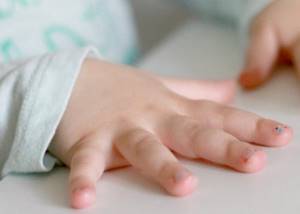
In children, the rate of nail growth is approximately one and a half times greater than in adults. This growth of nails continues until puberty - source
Also, nail growth slows down when there is a lack of sufficient amounts of protein, vitamins and microelements in the body.
In a young and completely healthy body, the following factors can cause a change in the rate of growth of the nail plate:
- pregnancy (nails may grow faster or slower than usual);
- period of lactation and breastfeeding;
- regularly washing dishes with detergents without using protective gloves (slows down nail growth);
- active adherence to any diet;
Also, regular use of shellac and nail extensions significantly slow down the growth of nails, due to insufficient oxygen supply to the nail plate.
Unlike the popular belief that nails grow after a person’s death, this is not true. Drying of the skin on the fingers creates the appearance of nail growth.
How a nail grows: structural features of the plate and renewal process
So what is a nail? According to medical reference books, this is a horny plate located on the epithelial tissues of the terminal phalanges of the arms and legs. On the outside, the nail is a smooth surface, and on the inside it is covered with ridges and grooves.
Photo from the site: ratiroufa.ru
The main building material of the nail is the protein keratin, which is responsible for the density of the plate. The amount of keratin substance is determined at the genetic level. In other words, the strength and strength of the nail plates is a hereditary factor and it is impossible to influence this indicator in any way (except perhaps by resorting to the procedure of strengthening the nail with artificial materials). The strength of the nail plates is determined by sulfur molecules, which are found in large quantities in the nails, as well as layers of fat and water, which ensure the elasticity and gloss of the nail plates.
The dermis on which the nail plate is located is called the nail bed. The dermis is lined with blood vessels, which is why the nails have a pinkish tint, and nerve endings. Through vessels, nutrients and oxygen are delivered to the nail. The growth of the nail plates begins in the proximal part of the dermis and is called the matrix, from where the nail grows. It is here that cells are laid down, which are slowly pushed out of the matrix and line the surface of the nail in the form of keratinized matter. This process occurs continuously.
The nails are surrounded on three sides by protective skin ridges that protect the matrix and bed from the penetration of pathogenic bacteria and infections.
Important
The supply of nutrients and oxygen to the nail plate is 90% due to internal nutrition. The nail receives the remaining 10% from the outside, and most of it comes from oxygen. Continuous wearing of artificial nails and gel coatings blocks the access of oxygen from the outside. As a result, the nail, experiencing oxygen starvation, begins to move away from the nail bed. The bed itself thickens, and voids form between it and the plate. There is even a risk of losing a nail. To prevent this from happening, take short breaks from painting your nails, or at least do not overuse this procedure. Once every two weeks is the minimum acceptable interval between staining.
What to do to prevent cuticle from growing?

This is a natural process and it is impossible to reverse it, but you can slow down the growth process with the help of appropriate means and procedures.
- The first option is a hardware manicure. Thanks to high-quality treatment of the cuticle area and side ridges, the skin grows twice as slowly as compared to a classic trimmed manicure. The procedure must be performed by an experienced technician.
- The second option is an effective remedy for slowing down cuticle growth. For example, Bali Oil Spa from El Corazon or the like. When used systemically, judging by reviews, the cuticle becomes much more hydrated, elastic and grows more slowly.
- The third option is systemic moisturizing and nourishing the cuticle with any oil or nourishing hand cream. It does not dry out as easily, does not crack, and grows more slowly along with the pterygium.
- The fourth option is to use a special cuticle file. The skin is worked dry and then generously covered with oil or cream.

About nail files of different purposes and types.
People with the longest nails in the world

The Hindu Sridhar Chillal was not satisfied with the theory about slowing down the growth of nails, and he decided to test this hypothesis in practice. The man hasn't cut his nails for almost 50 years. As a result, the total length reached 6 m 12 cm, and this record was entered in the Guinness Book of Records in 1997. The length of the nail of Sridhar's thumb was 1m 40 cm, the ring finger - 1m 28 cm, the little finger - 1m 21 cm, the middle finger - 1m 17 cm and the little finger - 1m 9 cm.
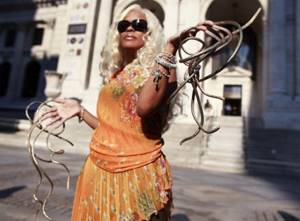
Another owner of fantastically long nails is Chris Walton, a 45-year-old singer from Las Vegas. The length of her largest nail is 91 cm, and the total length of her fingernails is 6.5 m. In one interview, the woman admitted that she had been growing her nails for 18 years and was very pleased with the result. Despite the unusual manicure, Chris lives life to the fullest and does not deny himself anything. The singer admits that she handles household chores herself, plays the piano masterfully and knits.
Thus, nails have practically no limits to growth, but the rate of renewal of the nail plate is very limited and highly depends on individual factors, hormonal levels and general health. However, if you set a goal and do not cut your nails for many decades, the nail plate will begin to thicken, bend and darken.
Preparing for prosthetic nails on a toe or hand
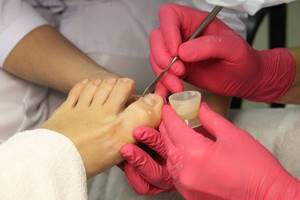
- An examination is carried out, during which the condition of the nail, the degree of its damage are assessed, and material for prosthetics is selected.
- Treatment begins with treating the finger with a spray or solution with an antiseptic effect.
- Using sterile instruments, all affected areas of the plate are removed, leaving only healthy and strong tissue. This is done to ensure that the prosthesis fits better.
- The rough layer is removed from the rollers to avoid ingrowth of the natural nail under the artificial one.
- The plate and open bed are re-treated with antiseptic agents. This is necessary in order to destroy bacteria that cause inflammation, as well as remove the fatty layer that interferes with the quality fixation of the prosthesis.
- After completing the above stages, prosthetics are performed, the type of which depends on which of the three types of prosthesis was chosen.
It is not so important what material was used to create the artificial nail. Any of them contains strong antifungal components that help prevent the development of fungal infection under the plate.
Common nail and cuticle problems
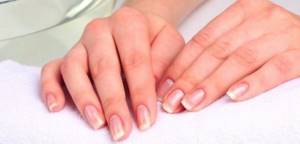
A manicurist often encounters the following problems: inflamed or itchy cuticles, hangnails, greening, yellowing of nails. The same problems can be encountered when doing manicures at home.
If the cuticle burns and itches, this is the first sign of an allergy. It can be caused by food or appear after manicure and coating. Top, gel polish, base, primer - all components can cause itching. If such symptoms appear, you must take an antihistamine such as Suprastin, Cetrin or Claritin, and then contact your specialist and remove the coating. Then, by elimination, you can select other components of the coating or replace it with a hypoallergenic complex of base, gel polish and top.
Health hazards of gel polish and its components
Inflamed cuticles or lateral ridges on the arms or legs. If the skin around the plate is red, swollen, or inflamed after a manicure or physical household work, it is necessary to treat the area with zinc or silver ointment. You can also replace them with Spasatel balm or Sudocrem.
Why does the cuticle become inflamed? The reason is the entry of pathogenic bacteria into wounds and microcracks in the skin. It is better to treat the inflamed areas if you plan to have a manicure done in a salon, otherwise it will be difficult for the master to treat the reddened and painful area. If you constantly injure the inflamed cuticle, the area may fester, and then more serious treatment will be required.
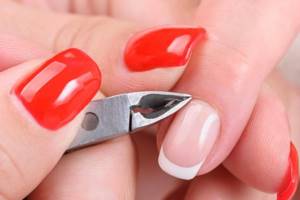
Immediately after an injury, if the skin bleeds, it is necessary to treat it with hydrogen peroxide or a disinfectant until the bleeding stops, and then apply one of the above healing agents to avoid inflammation.
If the cuticle turns yellow, this may be due to frequent contact with chemicals that color it in the corresponding color, or it may indicate problems with the liver.
In the first case, you can make lotions from lemon slices, put pieces of cotton pads soaked in micellar water for 7 minutes, or apply toothpaste mixed with soda for 5 minutes and rinse. In the second case, you need to see a doctor for a comprehensive examination and treatment.
If the nails turn green, this indicates the appearance of a fungus or the proliferation of Pseudomonas aeruginosa. At the first signs, it is necessary to remove the artificial turf, treat the problem, heal the diseased areas with deep penetration of fungus or bacteria, and only then return to the decorative decoration.
How to remove cuticle and pterygium
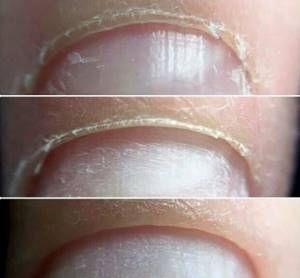
The photo illustrates the condition of the cuticle before and after removal by a master using a device. Using cutter attachments, the cuticle is first lifted, the pterygium is removed, and then it is cut off. Most often this is done with a ball attachment. Overgrown, neglected skin requires removal with scissors even with a dry hardware manicure. Read more about the purpose of cutter attachments for hardware manicure.
With a classic trimmed manicure, the cuticle is soaked simply with water or using keratolytics. These are acidic or alkaline compounds that soften the rough skin of the cuticle and side ridges in a matter of minutes, and it is easy to either remove it with an orange stick or cut it with scissors.
Keratolytics for manicure: types, methods of application, brands
How to remove cuticles without cutting? At home, you can remove the cuticle without cutting it using the same keratolytics or removers. The product is applied to the skin around the nail, hands are immersed in water for 2-3 minutes, and then the overgrown skin is removed with an orange stick or pusher, which by then turns into a soft paste. This is convenient for keeping hands well-groomed and with slow cuticle growth. If you have rough and rapidly growing skin, you will still have to use scissors or a device.
